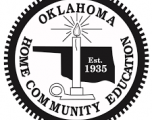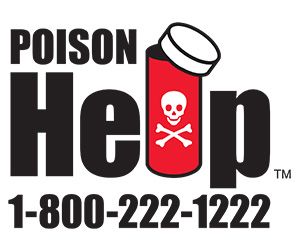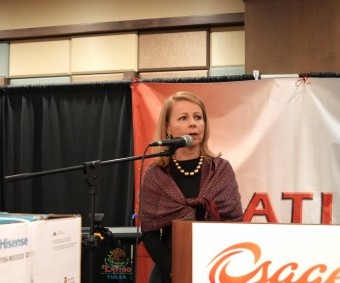DHS receives best report to date from monitors overseeing foster care reforms

Oklahoma City—The Oklahoma Department of Human Services (DHS) received the most positive report to date on the agency’s foster care reform efforts since it began making improvements in 2012. DHS achieved “good faith efforts” in 29 of 31 performance areas according to the latest report from the monitors overseeing the agency progress.
“As Governor, family impact is at the forefront of every decision and I believe we must be committed to strengthening the families of Oklahoma,” said Governor Kevin Stitt. “I applaud the continued efforts of DHS staff and partners who are working every day to improve our state’s foster care system as outlined by the Pinnacle Plan. I am pleased with the agency’s progress and believe they are very close to fulfilling those commitments to the children and families they serve.”
“We are continually encouraged by the steady progress we see every day and are pleased the co-neutrals have recognized our efforts,” said Ed Lake, DHS Director. “This achievement is a testament to the hard work of our Child Welfare Services staff, providers, and partner agencies that provide services to the children in our care.”
The three out-of-state child welfare experts referred to as “co-neutrals,” issue reports every six months on DHS’ progress and determine whether the agency has made “good faith efforts” to make improvements in the state’s foster care system. This latest report covers the period of time ending Dec. 31, 2018.
The two performance areas DHS has not met relate to the number of foster homes for children in DHS’ custody who need a family-based program called therapeutic foster care. Therapeutic foster care is intended for children who have a mental health diagnosis and can benefit from the habilitation services offered. This often does not include children with intellectual disabilities. Recruitment efforts for therapeutic family homes and treatment services continue to pose challenges for DHS, as supports are limited in Oklahoma for children with autism, complex medical needs, and co-occurring mental health disorders and intellectual disabilities.
DHS Child Welfare Services (CWS) is currently in the initial phase of working with partner agencies, including the Oklahoma Department of Mental Health and Substance Abuse Services and the Oklahoma Health Care Authority, to enhance supports for children with these complex needs by creating a continuum of care that involves all three agencies.
“We are working with the co-neutrals and our partner state agencies on an innovative concept for expanding therapeutic services for children in foster care,” said Lake. “This will result in a more comprehensive continuum of care for children with complex medical, emotional and behavioral needs.”
About the Pinnacle Plan – Foster Care Reform Success
In January 2012, the Oklahoma Department of Human Services settled a class-action lawsuit filed against its foster care system by a child advocacy group. As a result of this settlement DHS created, and in 2013 implemented, the Oklahoma Pinnacle Plan which was a detailed plan to improve the foster care system. Funding for the improvements over the past six fiscal years includes more than $119.4 million earmarked appropriations plus more than $170.3 million DHS has redirected internally to Child Welfare Services (CWS).
Progress and achievements to date include:
DHS has added more than 840 new case workers and supervisors to the child welfare workforce, workers being paid, on average, 33 percent more due to funding for raises. This has resulted in fewer turnovers of frontline workers.
Workloads for the child welfare workforce have substantially decreased. In 2012, 27 percent of the workforce statewide met workload standards compared to over 80 percent meeting workload standards today.
Enhanced safety practices by staff, foster parents and providers have resulted in fewer children experiencing abuse or neglect while in state care.
DHS and its contract partners have recruited and approved more than 4,200 new foster families, the highest increase in foster homes of any state in the nation.
The use of emergency children’s shelters has been significantly reduced statewide by 63 percent. In 2012, on any given day, there was an average of 300 children in shelters statewide compared to less than 75 today. Shelter use has been completely eliminated for children birth through one year of age since 2016, and placement of children ages 5 and under in shelters is almost non-existent. DHS has closed both of its state-run shelters and partners with locally-run Youth Services shelters when needed.
DHS has invested in more home-based services to keep many children safe with their families and avoid removals. These same services help families with children in care to be reunited much faster. Efforts to reduce the numbers of children entering state care, along with reunifications and adoptions, have reduced the overall number of children in state custody from a high of 11,298 in October 2014 to less than 8,000 today.
More than half of the children in state custody are placed in kinship foster homes, reserving traditional foster homes for children without identified or approved relatives or other familial relationships.
More than 11,500 children have been adopted from the foster care system and more than 15,000 have been successfully reunited with their families.
DHS has increased public-private partnerships to fund and support services the agency could not offer on its own or with limited state appropriations.
The experiences of Oklahoma children suffering from abuse or neglect are very different today thanks to the success of these reforms:
92 percent of children in DHS custody are placed with families
Children are more likely to be able to safely remain in their own homes while their families get the help they need.
Children first entering foster care are more likely to be placed with a family rather than in an emergency shelter.
Children entering foster care are more likely to be placed with their own families or with someone they know.
Children are less likely to experience multiple moves while in care.
Children are less likely to age out of foster care without legal permanency like adoption or guardianship.
After reunification with their families, children are less likely to reenter foster care.
Comentar
Los campos obligatorios estan marcados con *


















































Comentar con Facebook